Steve Rowell
Ground Up:
Photographs of the Ground in the Margins of Los Angeles
2003
In collaboration with the Center for Land Use Interpretation.
![]()
![]()
Ground-Up: Photographs of the Ground in the Margins of Los Angeles, an informative photograph and text display, was shown to the public at the Center’s exhibit space in Los Angeles for several weeks between September and November. The exhibition used soil maps of Los Angeles County as a tool for reexamining regional physiogeographic phenomena, as these curiously compelling maps provide a unique view of the landscape, and the human interventions within it.

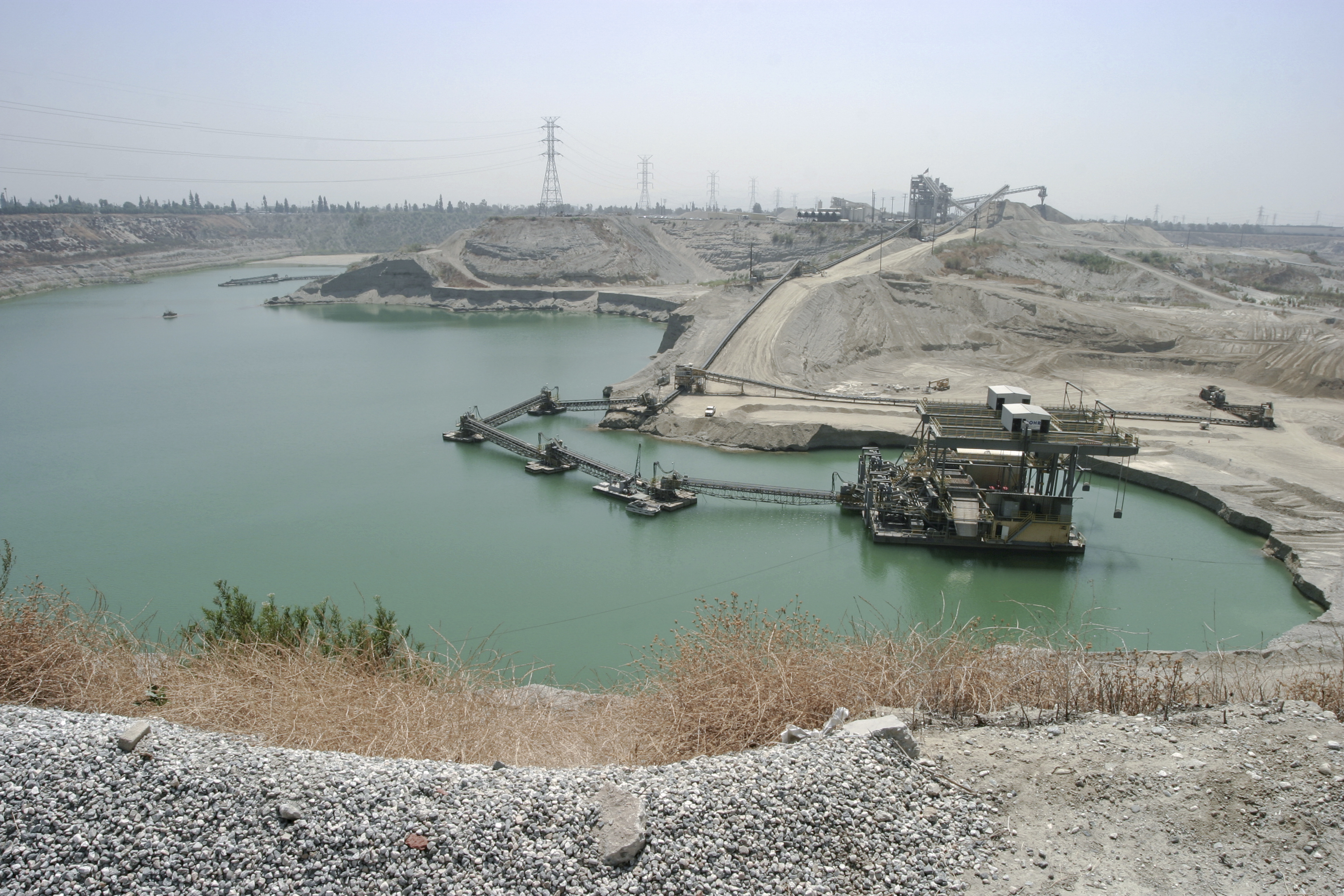
Soil maps, published by the Natural Resources Conservation Service, a division of the U.S. Department of Agriculture, are aerial photographs with soil types superimposed on them, and they serve as general guides for a range of activities, from agriculture to mining and construction. While no substitute for the on-site investigation of a soil engineer, soil maps can provide an overview of large areas of land as well as features that are overlooked on U.S. Geographical Survey topographical maps.
In addition to describing natural features, soil maps provide a record of recent human interventions on the earth and serve as a guideline for future land uses. The maps come with tables assessing the suitability of soil types for a variety of activities such as sand and gravel mining, septic tank filter fields, agriculture and excavation.
The sites selected for representation in the exhibit exemplify common soil interactions, in the margins of Los Angeles. “As we looked at the utilization of soil for agriculture, mining and recreation, and the control of erosion necessary for the construction of Los Angeles’ ever expanding borders,” said the exhibit curator, Erik Knutzen, “we found that it is at these margins that the ground can be seen most clearly, before paving erases the layers of meaning that soil contains.”
The exhibit featured several 4x5 large format film photographs of these selected ground locations. The fine grain of the photographs matched the grain of the depicted ground, and the authority and weight that large, finely crafted images convey contrasted implicitly with the nonplaces that filled the frame of each exposure, suggesting to some the possible terminus of one limb of the tree of landscape photography.
 Matt Coolidge, Erik Knutzen, and Steve Rowell (not visible, taking this photo) filming aggreate operations at Vulcan’s Reliance Gravel Pit in Irwindale, CA.
Matt Coolidge, Erik Knutzen, and Steve Rowell (not visible, taking this photo) filming aggreate operations at Vulcan’s Reliance Gravel Pit in Irwindale, CA.
On September 20, 2003 the CLUI conducted a public bus tour of the industrial city of Irwindale, east of Los Angeles, as part of the exhibit Ground Up: Photographs of the Ground in the Margins of Los Angeles. “We will be going to some of the most banal and dramatic landscapes in Los Angeles,” said the CLUI’s tour guide, Matthew Coolidge, “and by the time we are done, we probably won’t be able to tell the difference.”
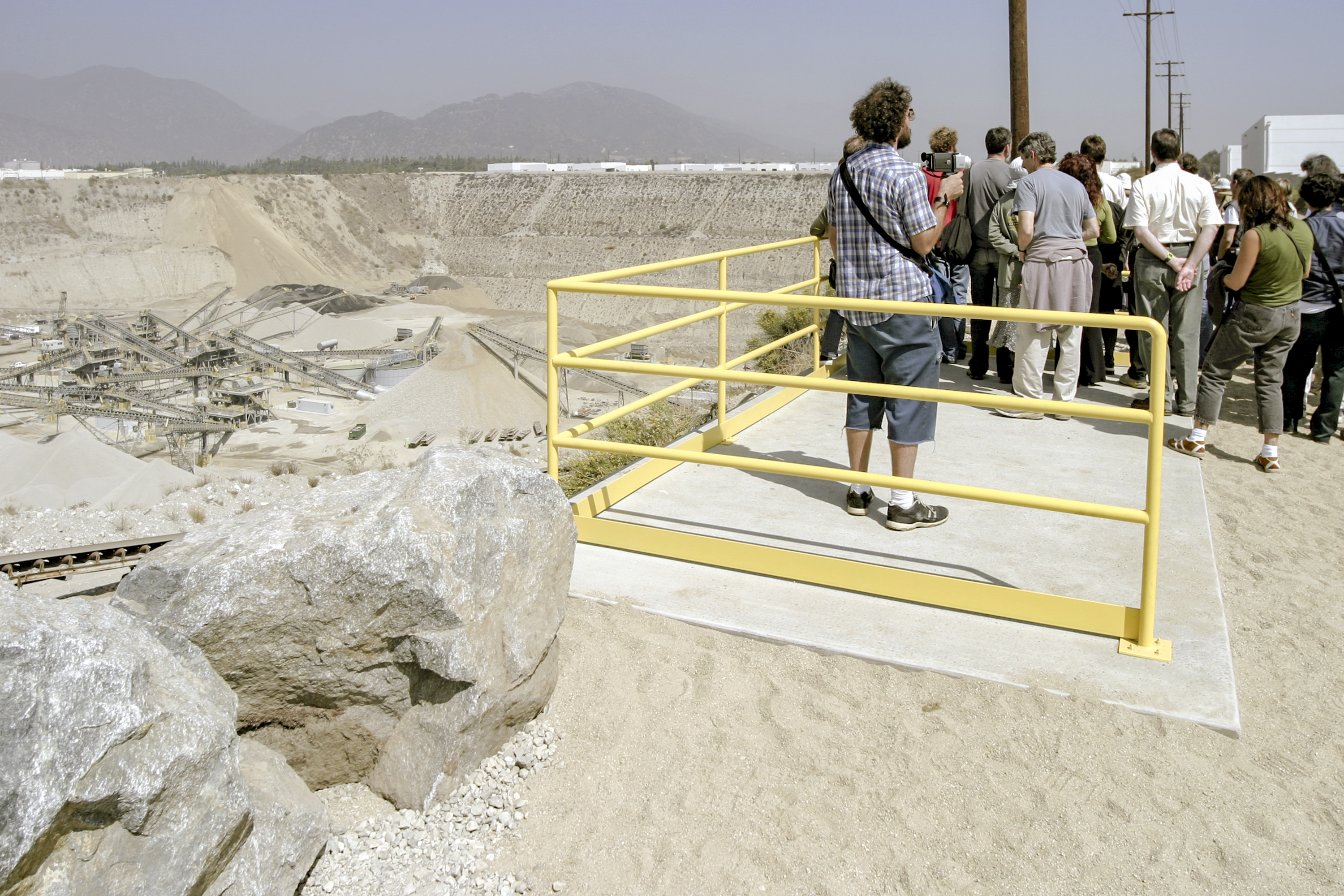
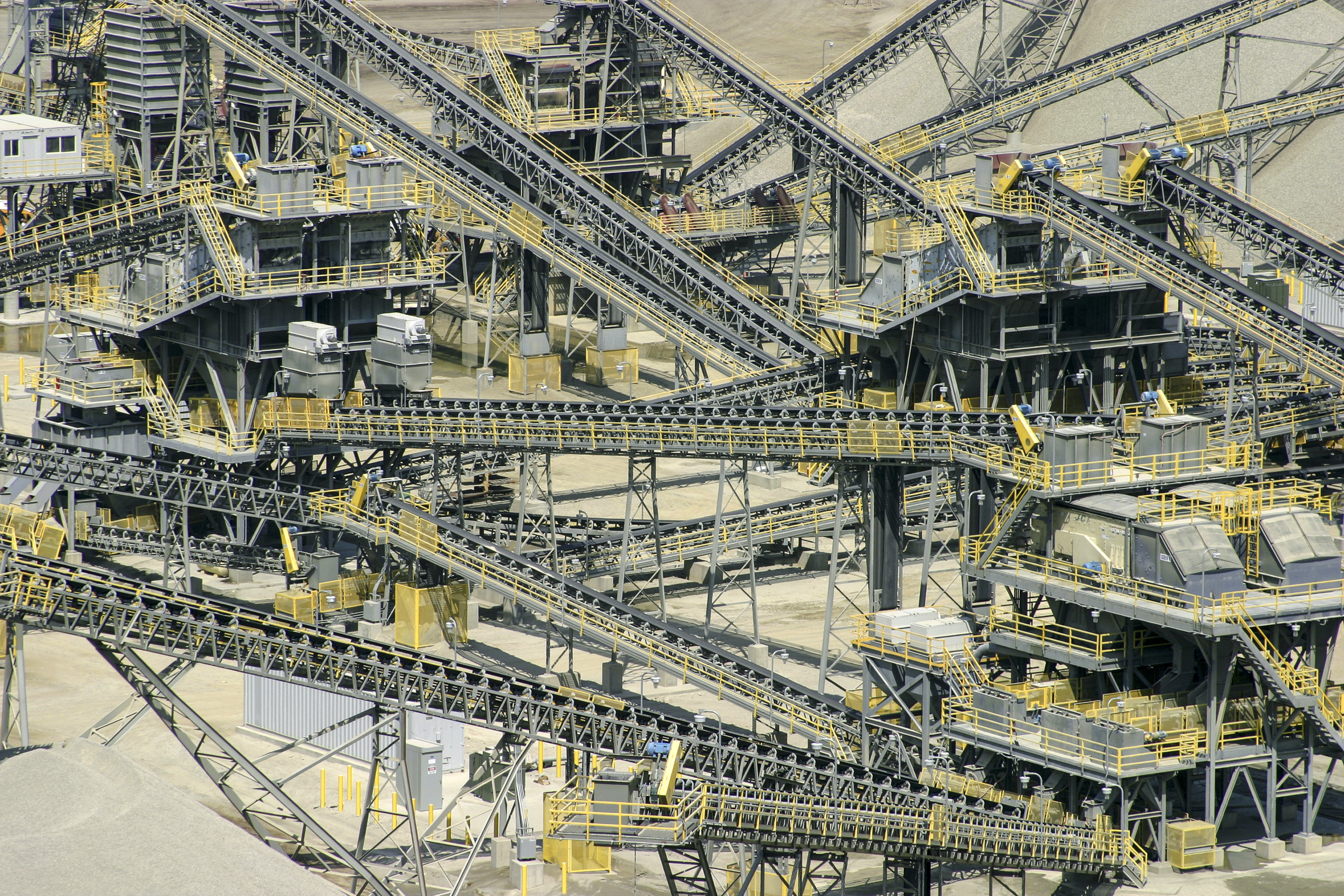


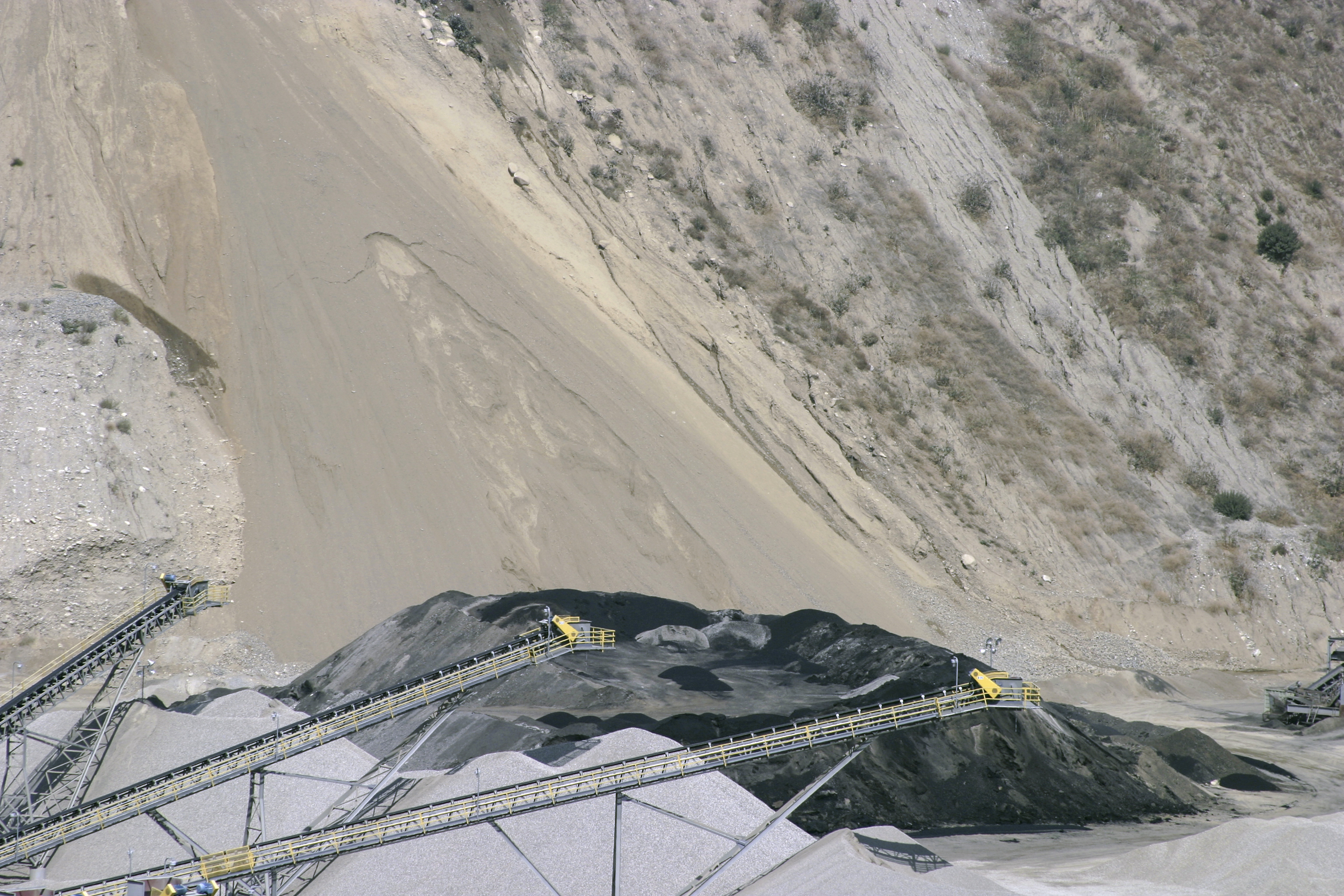



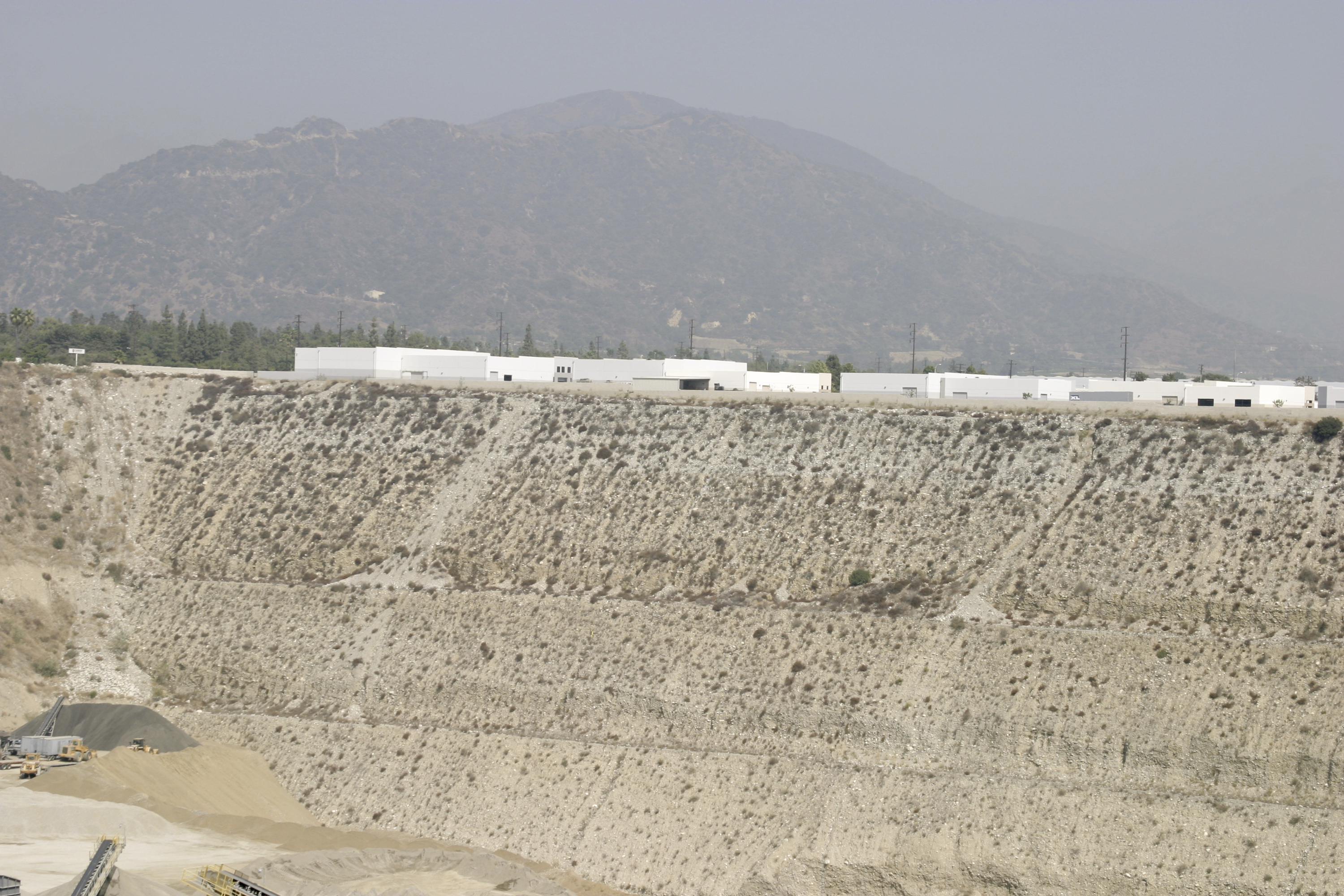



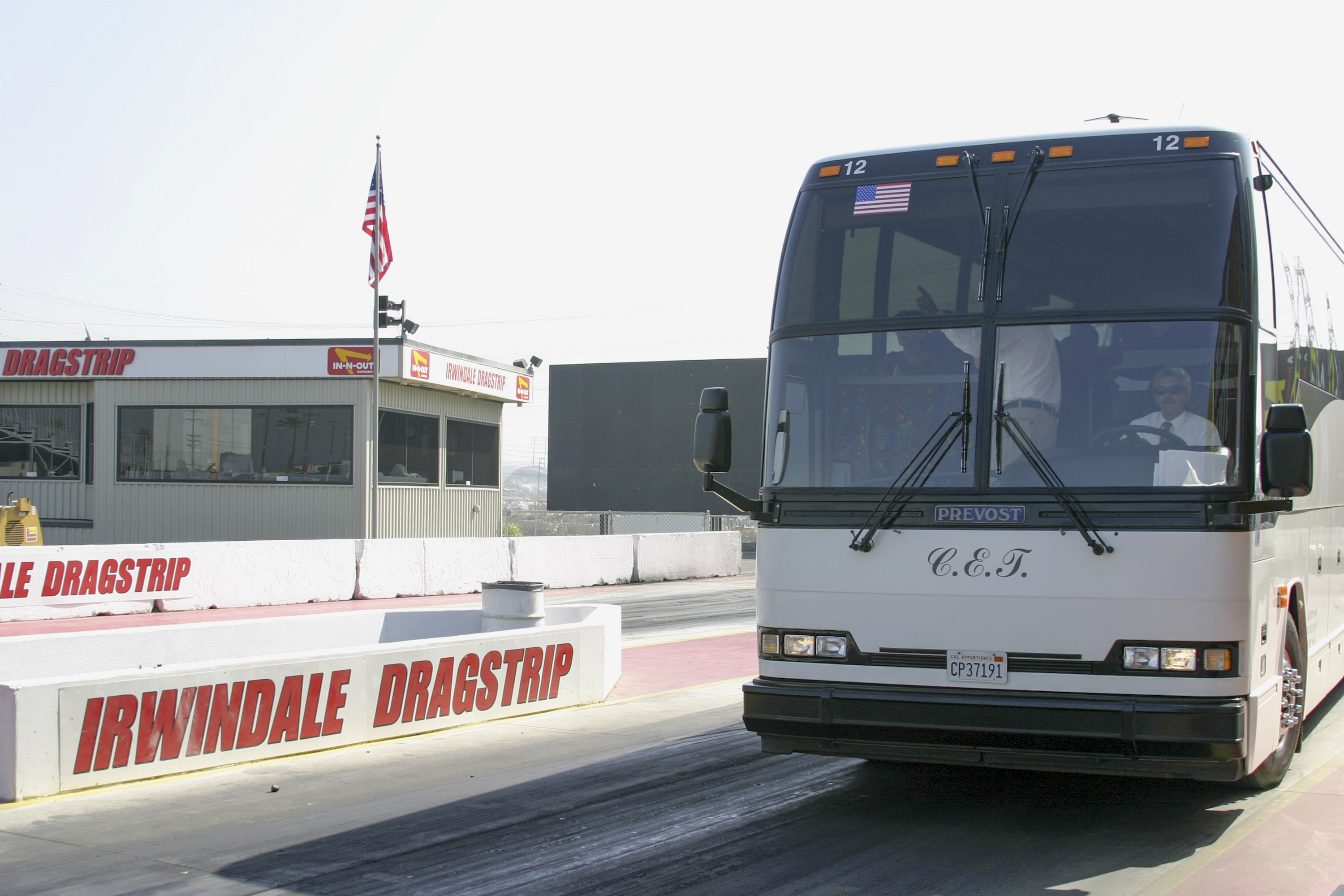

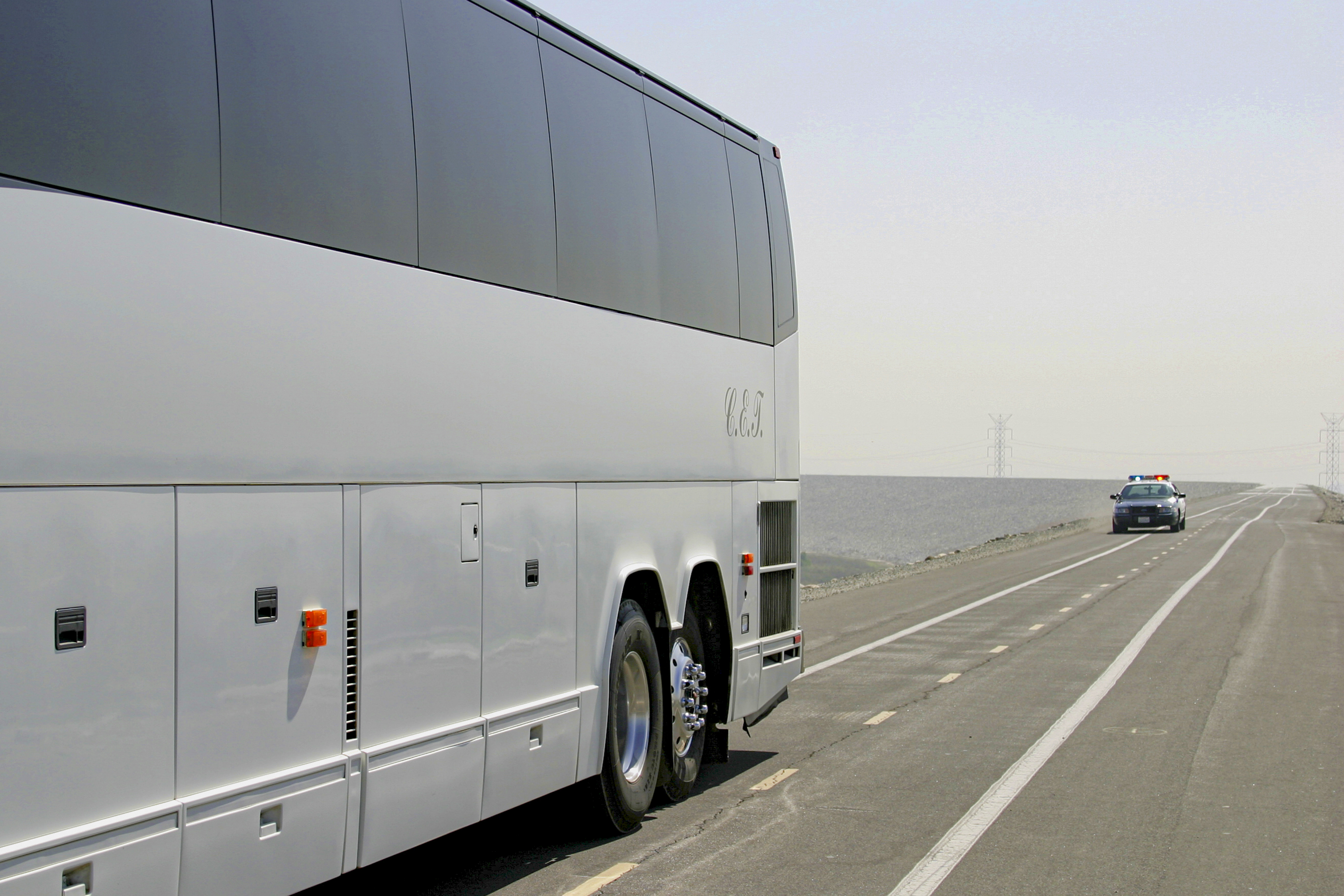

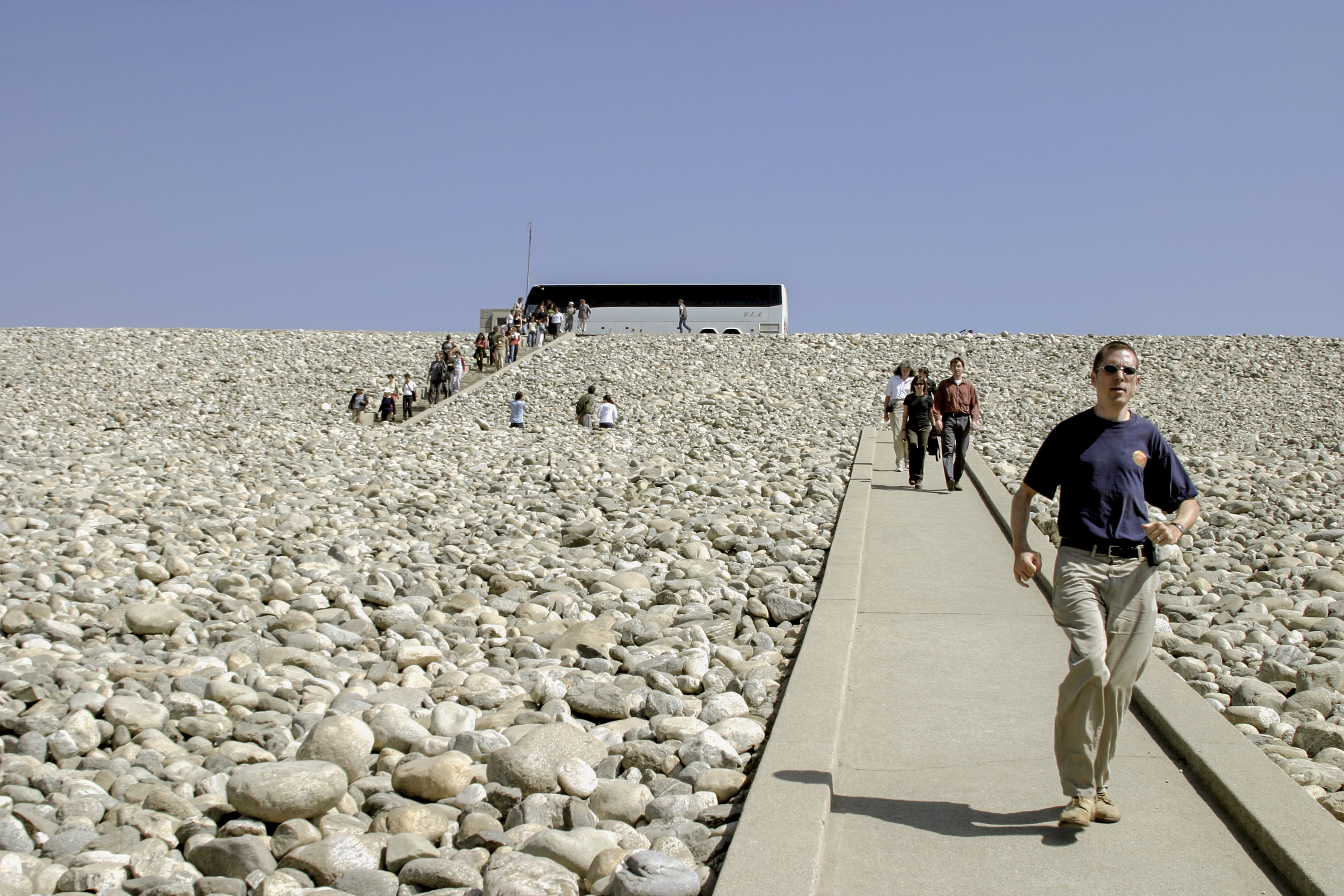

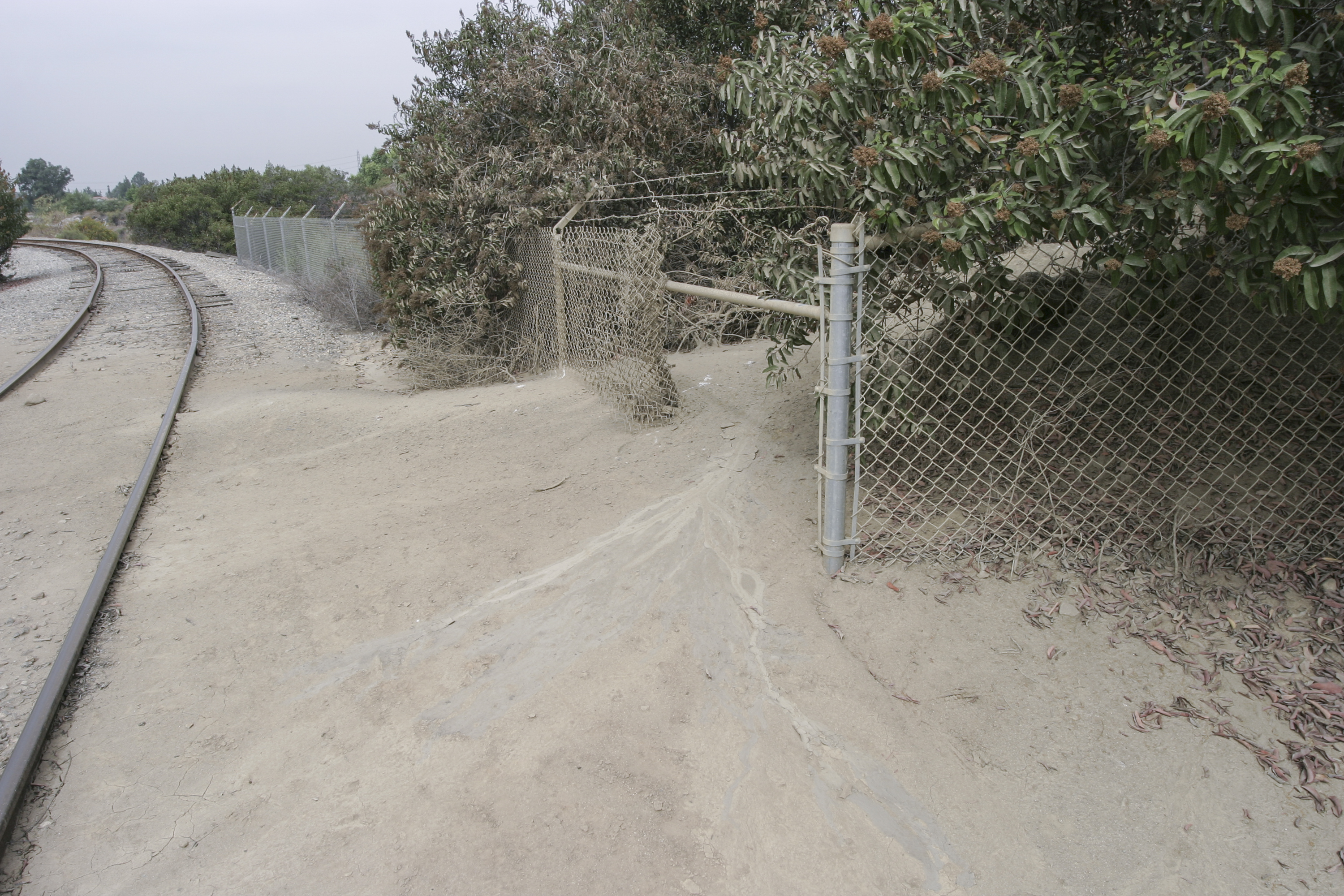




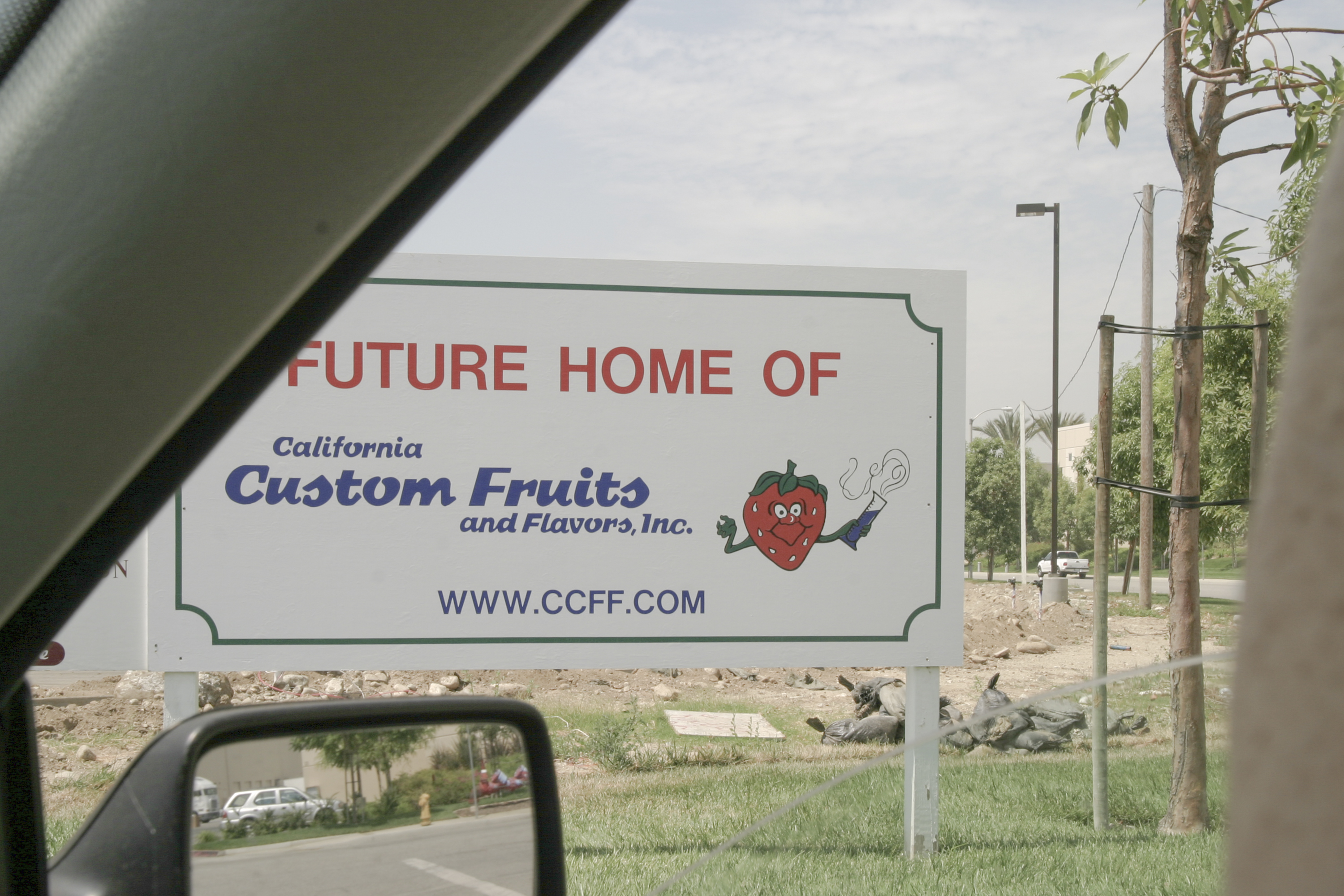
Like the exhibit at the CLUI, the tour was about the material that makes up the ground we live on. In a city like Los Angeles, nearly all of our time is spent—whether we are standing, sitting, sleeping, or driving—on an underlayment of concrete or asphalt. This manufactured ground material has its origins in the earth, at specific locations around the city. The aggregate that makes up the bulk of these bulk materials tends to be found in great abundance in the river valleys, where the disintegration of the mountains spills into channels, and falls downslope over the millennia, forming deep deposits in the ground. The material even sorts itself out, based on the distance from the mountains, with heavier, coarser material near the base of the slope, and progressively finer material further away.
The area of attention for the tour was the City of Irwindale, which lies at the base of the San Gabriel Mountains, and straddles the San Gabriel River, one of the major alluvial fans bringing marginal material from the mountains into the L.A. basin. Here, the margins literally flow into the city’s midst. Furthermore, as the largest aggregate mining area in the state, if not the nation, so much sand and gravel comes out of Irwindale that pieces of Irwindale can be found around all of Los Angeles in the form of the aggregate in the asphalt that is spread on Los Angeles’ roads, the aggregate in the cement of the city’s major construction projects, and even the city’s land mass itself. The new terminal in L.A./Long Beach harbor, under construction for years, was built with fill from Irwindale – thus the inland city extended the western reach of the continent. The result of the city continuously giving of itself in this way, is that Irwindale is so full of holes that more of the land in the city is a pit than not. ... continued – more from the Margins in our Midst bus tour article.